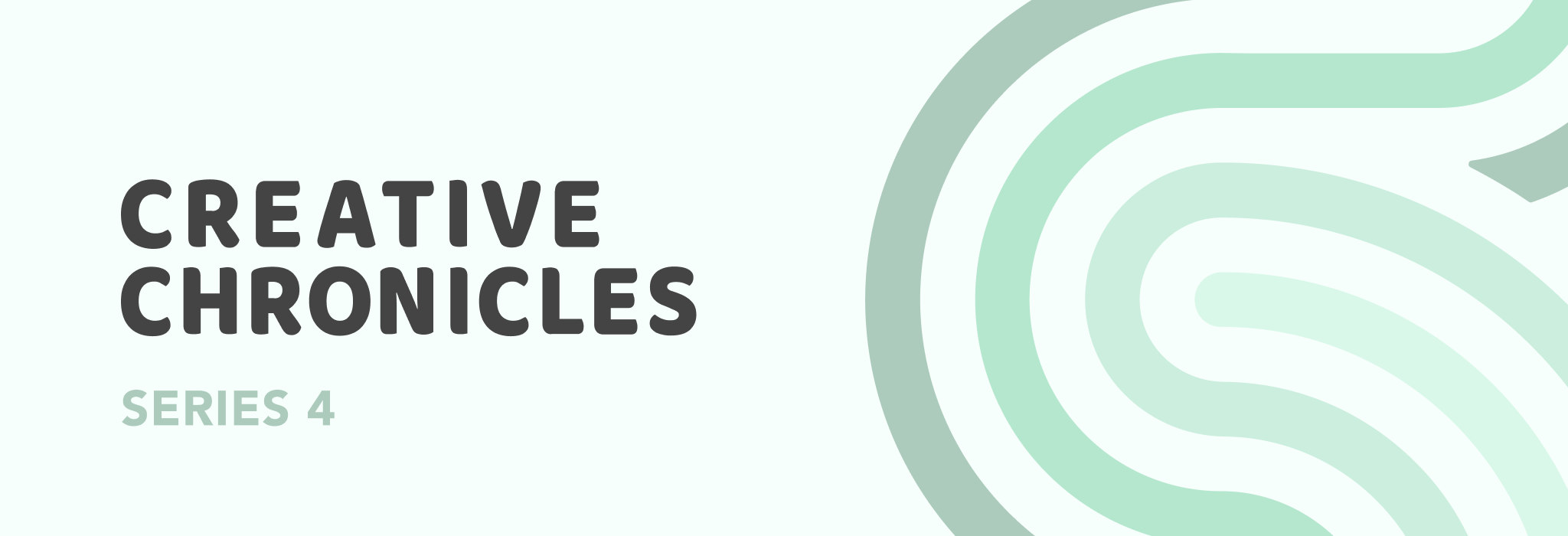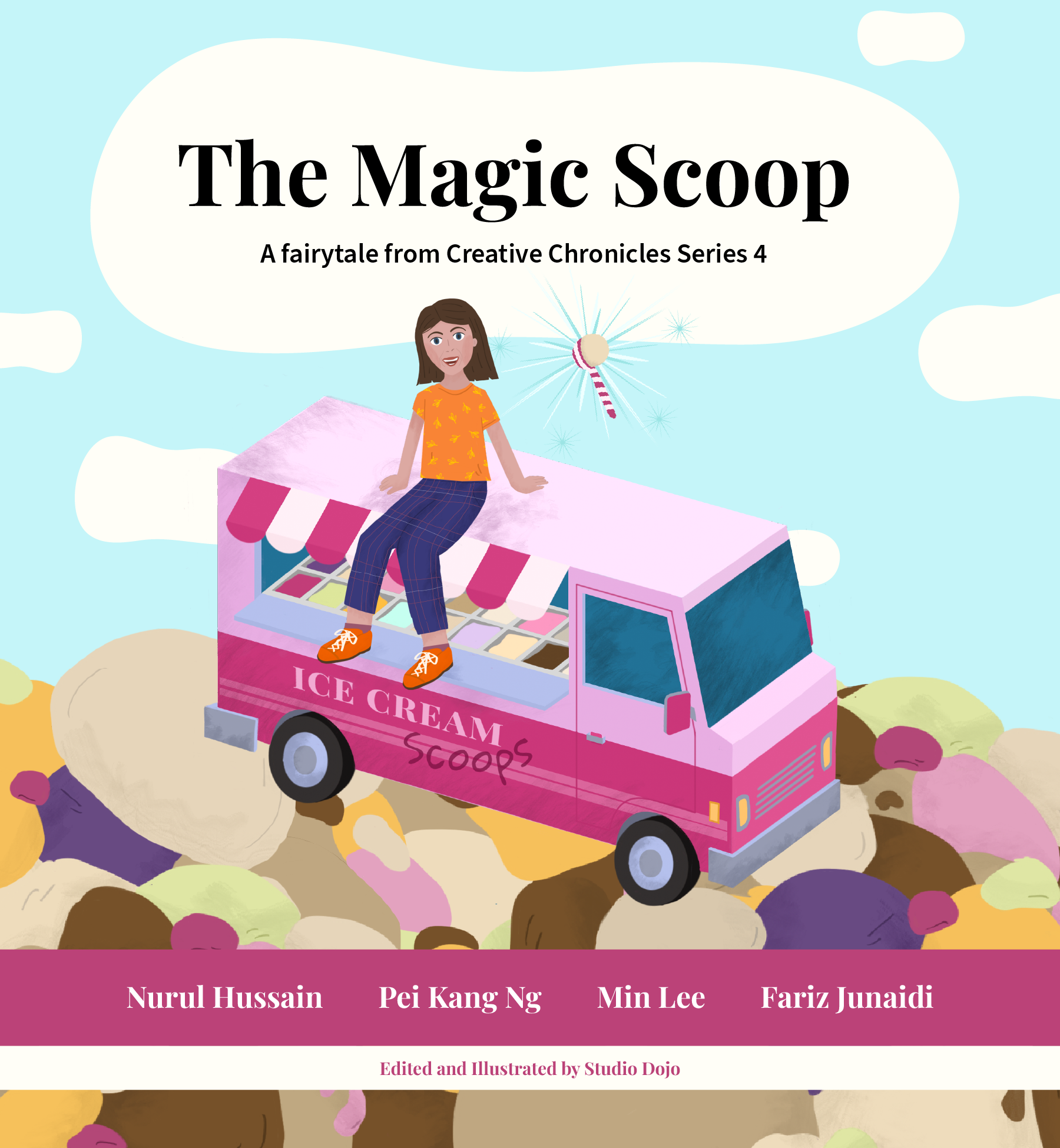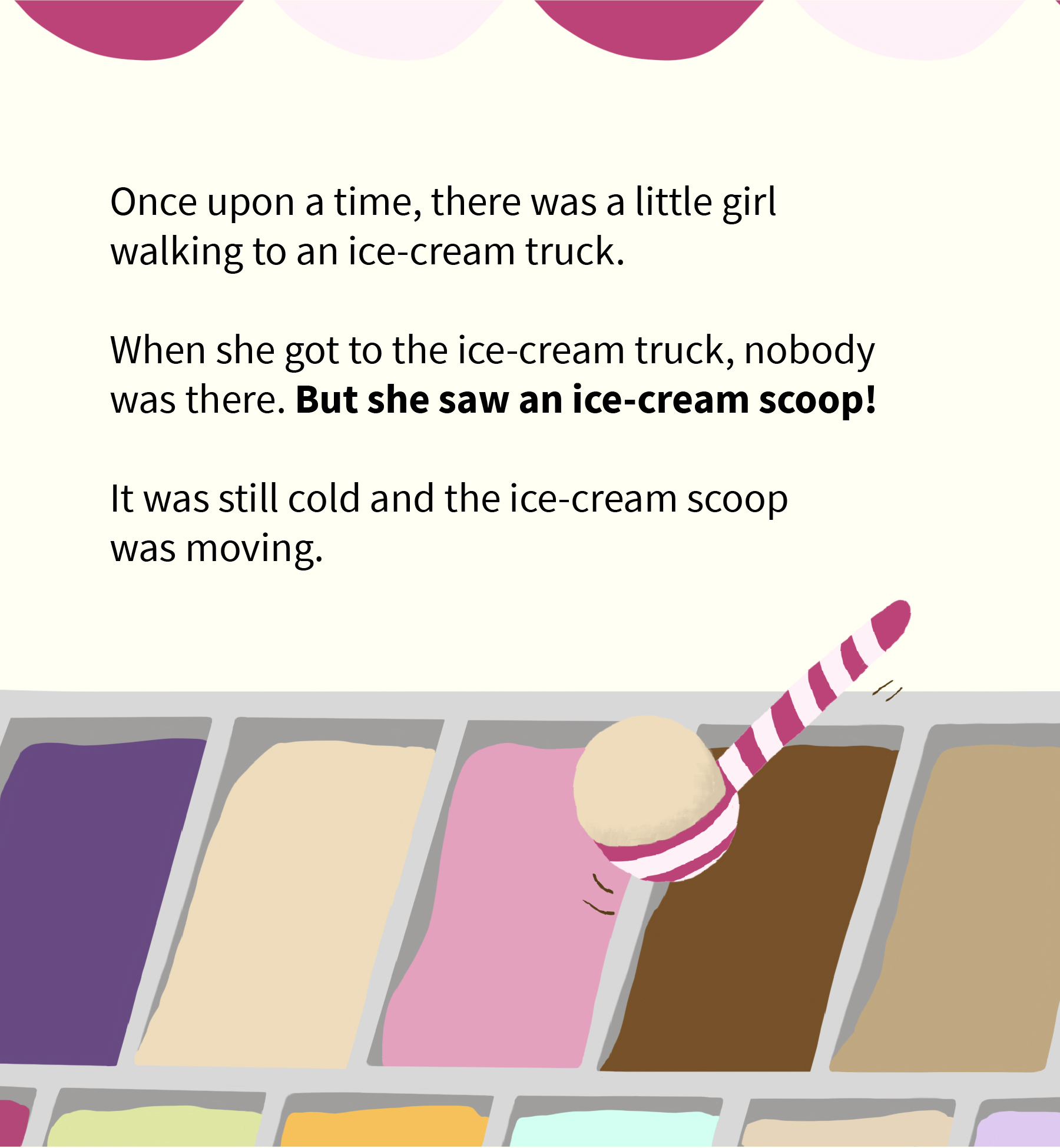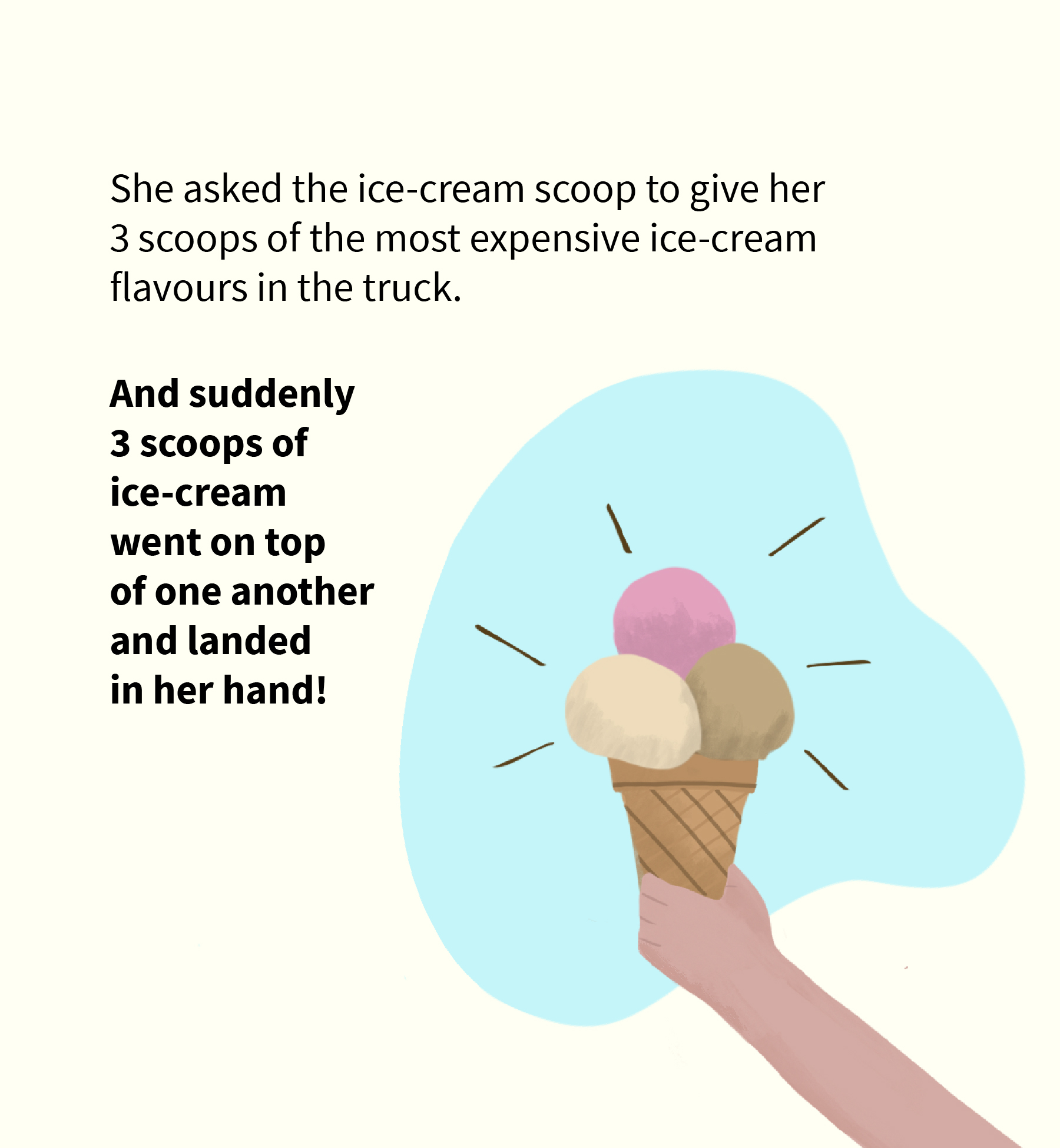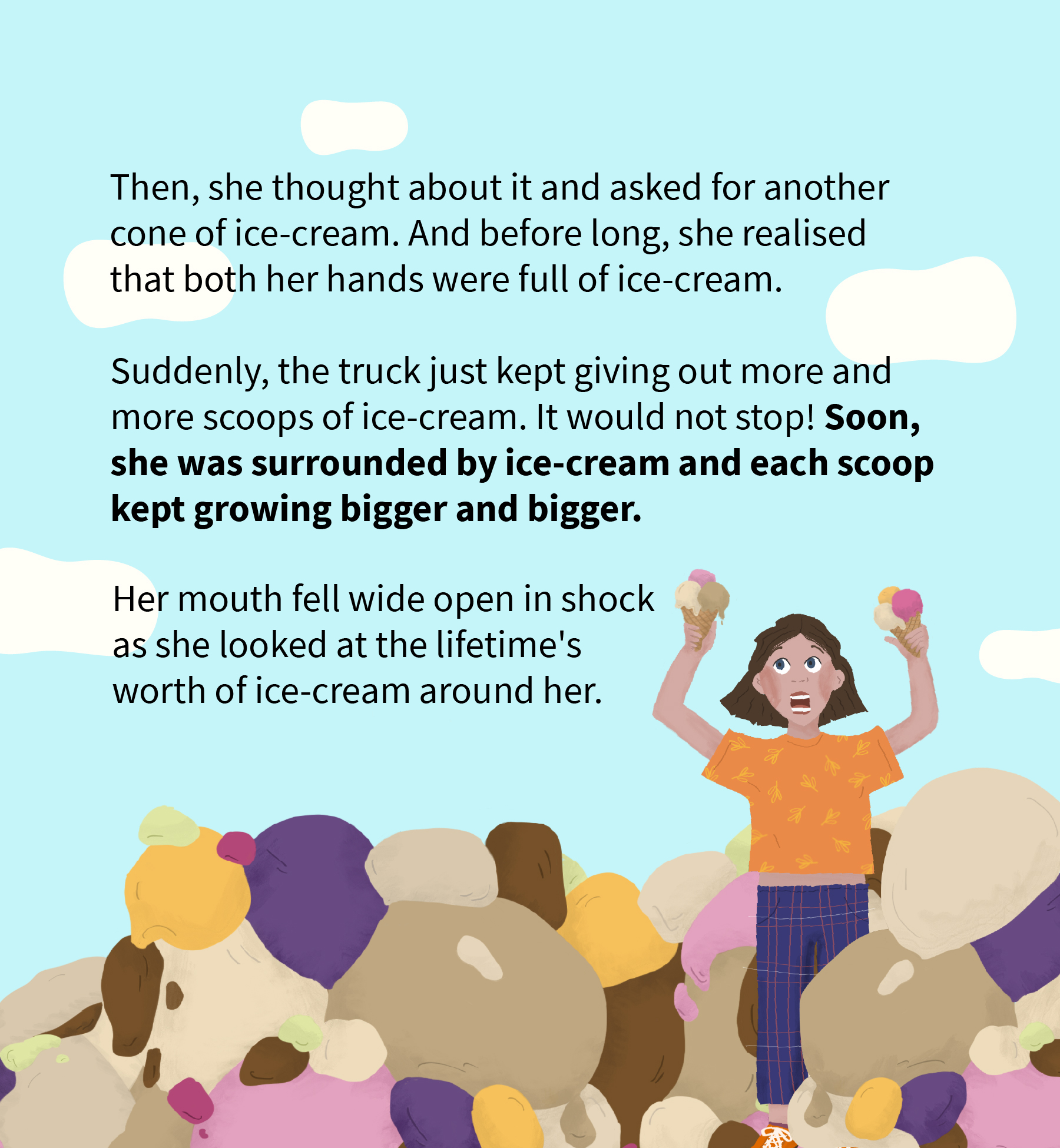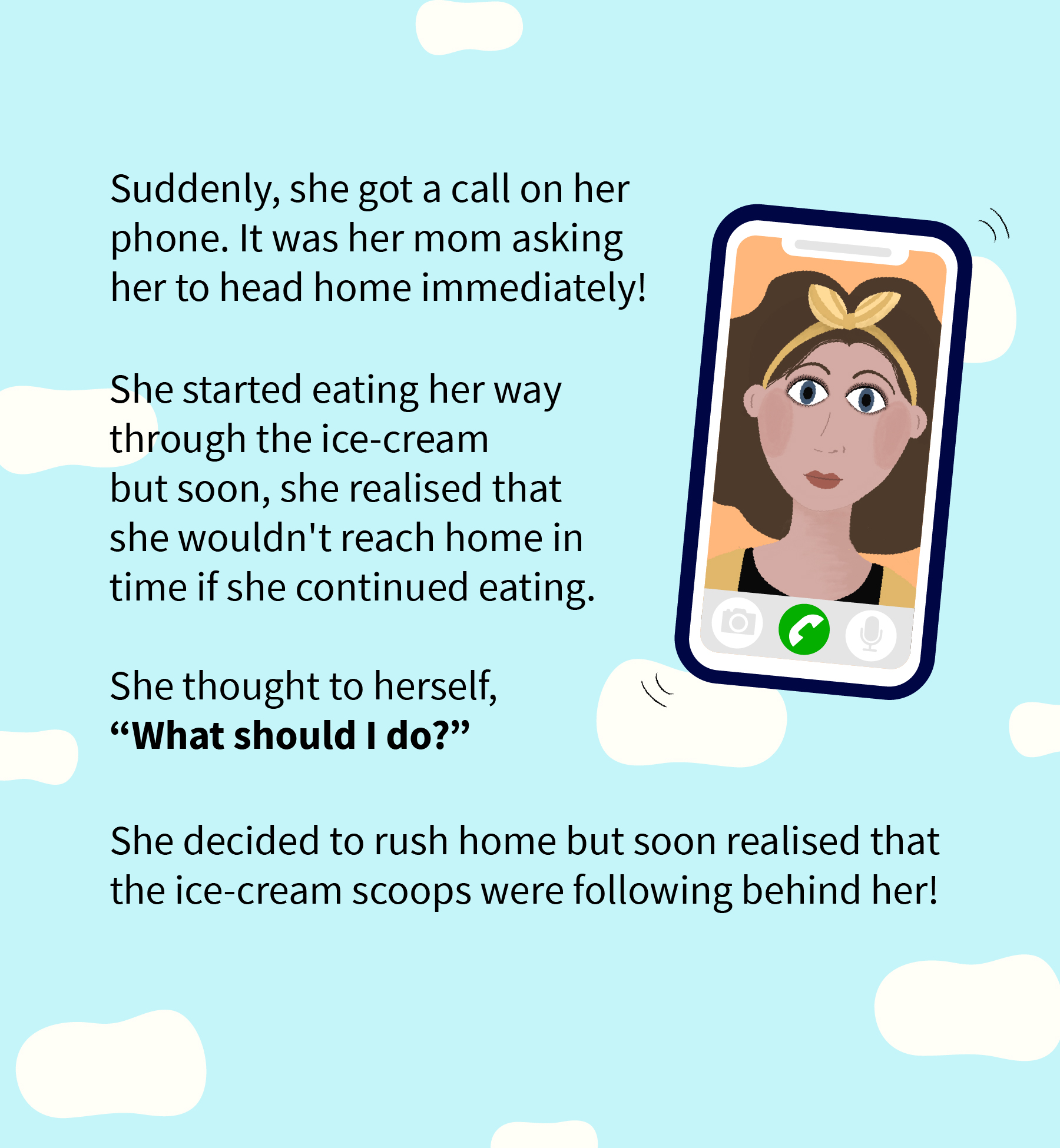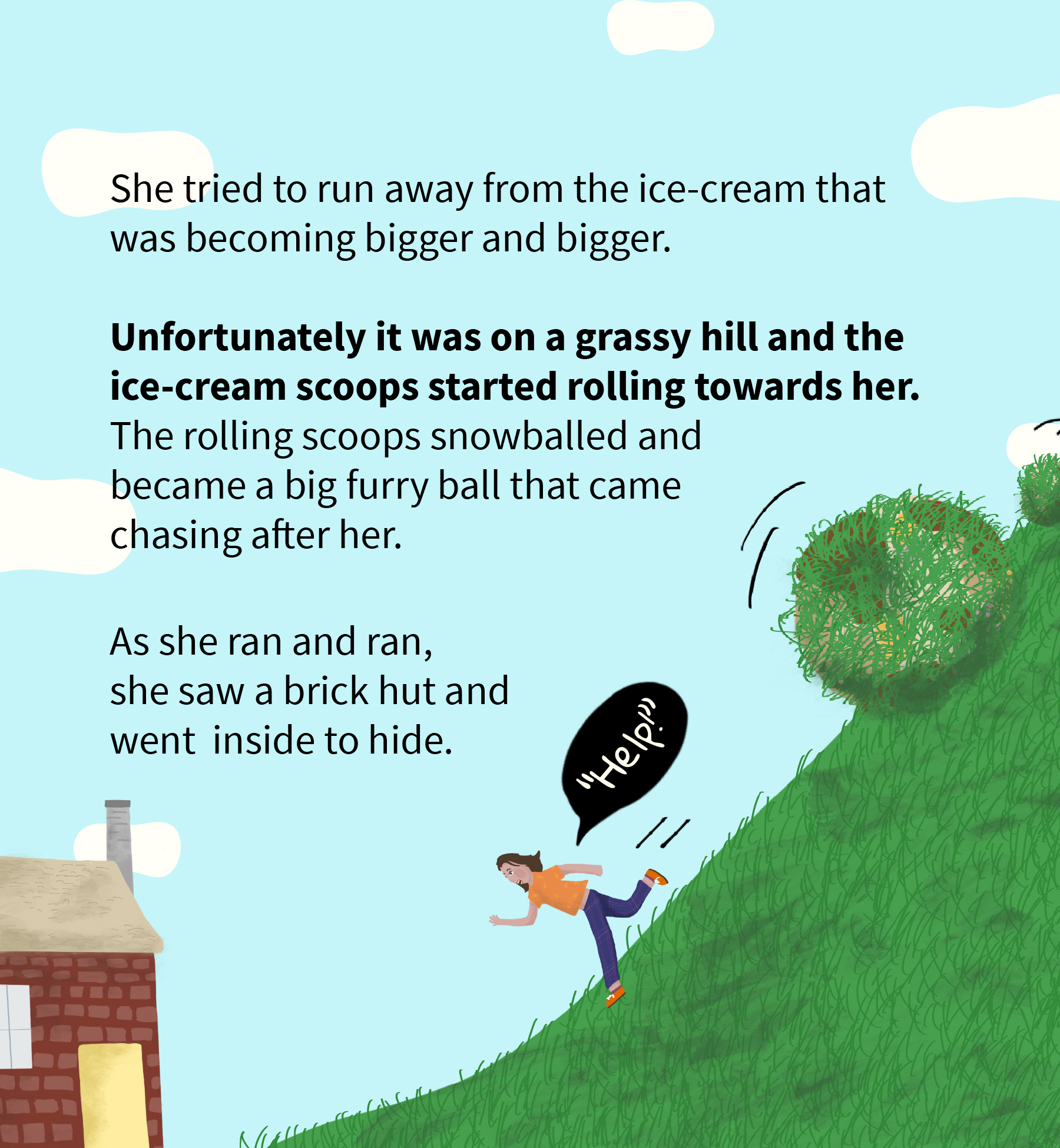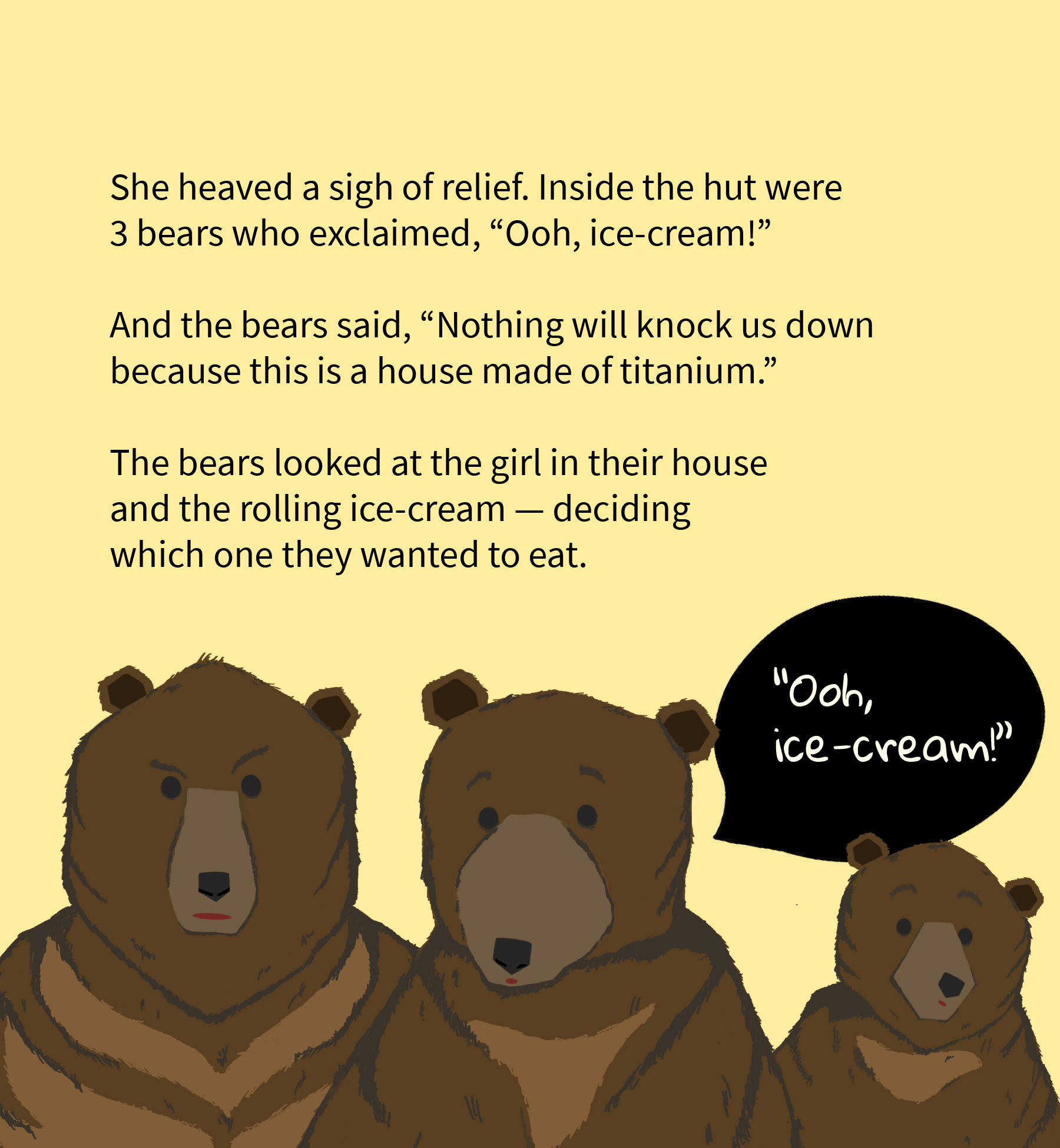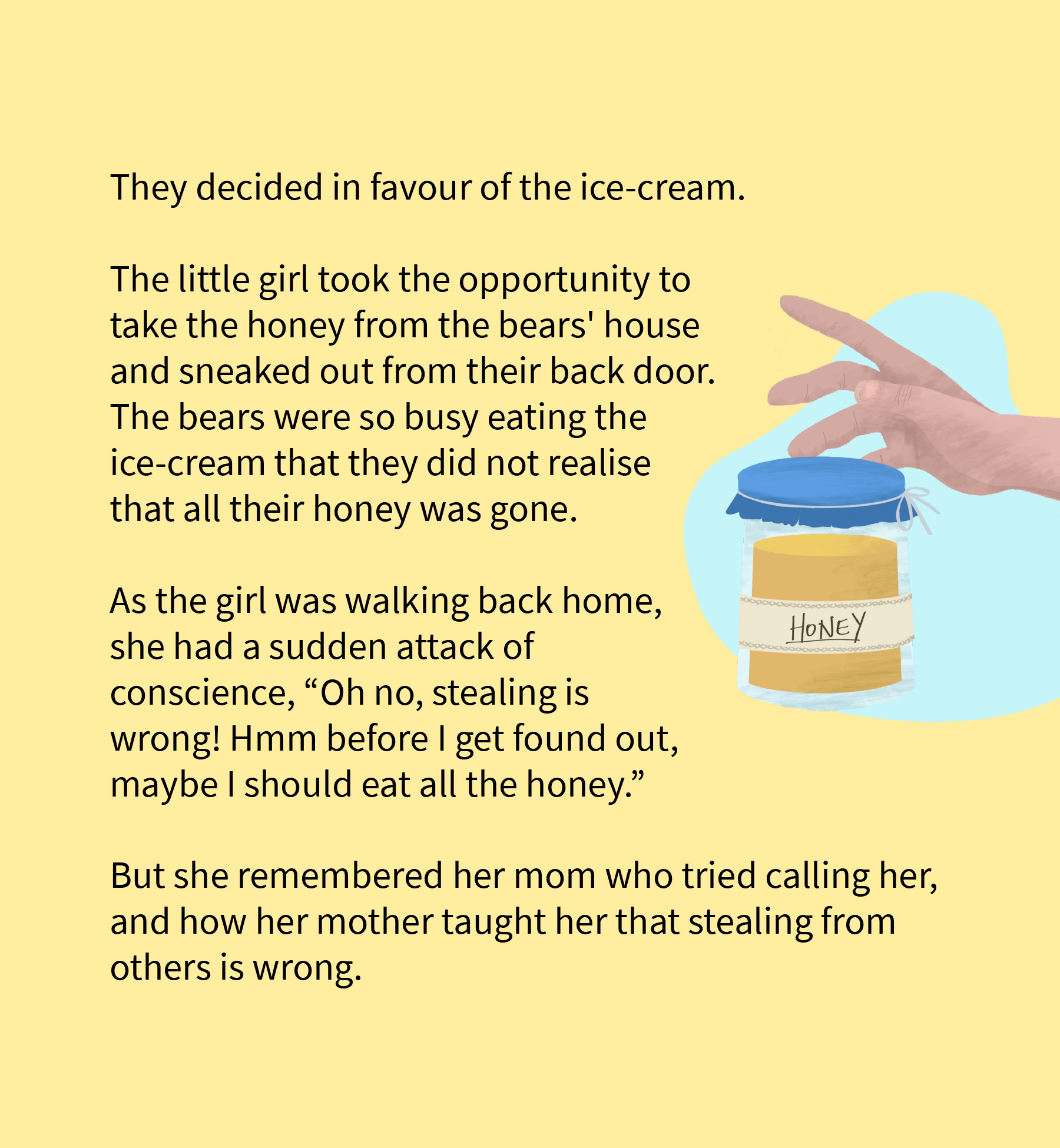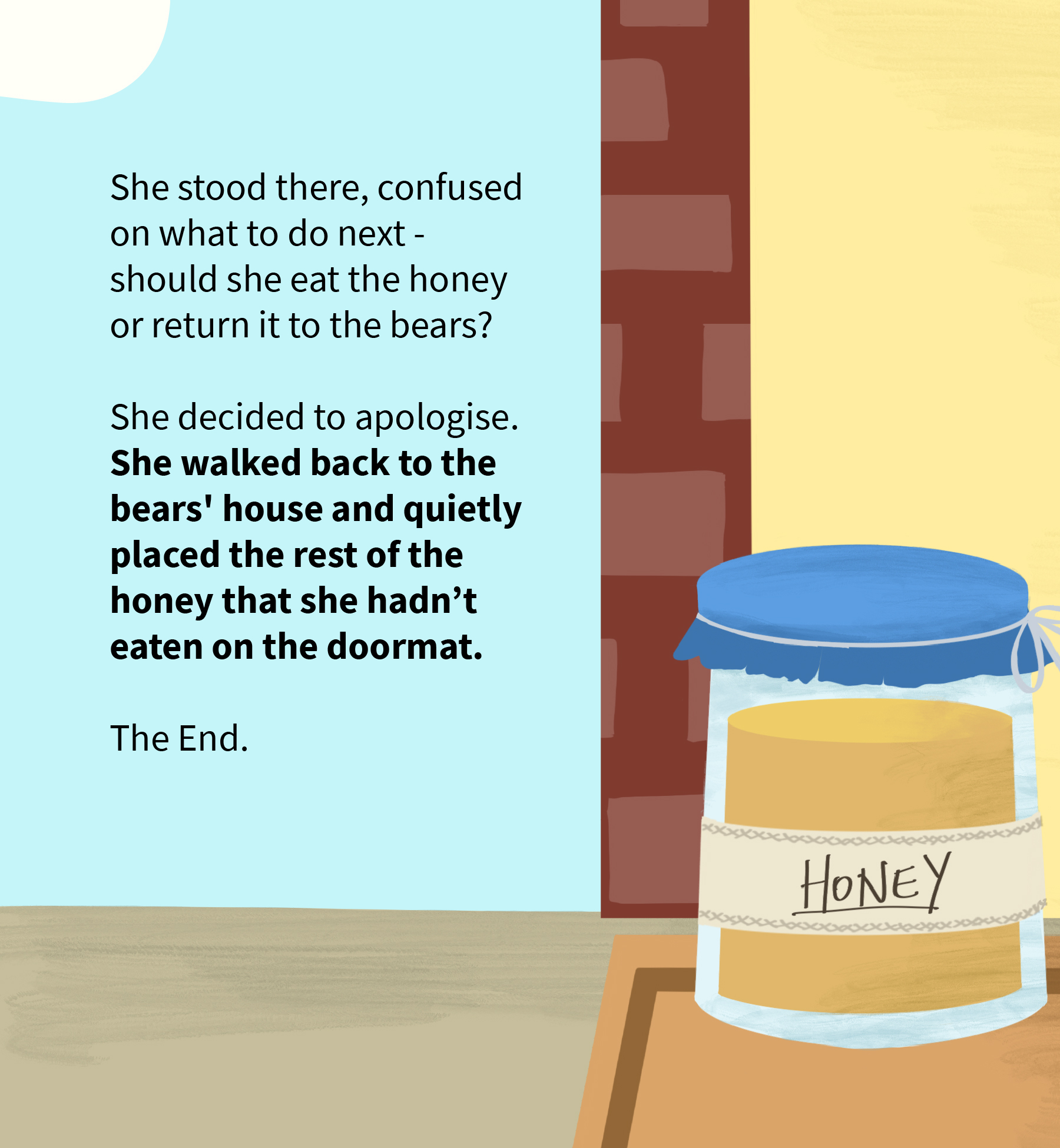What Happens When 4 Creatives From Different Spaces Collide?

Creative Chronicles is a series of articles exploring the lives of four Singaporean Creatives. Previously in Series 3, our Creatives reimagined possible futures for themselves through a Futures Thinking technique called Causal Layered Analysis (CLA). In this Series 4, our Creatives came together and collectively explored the question, What happens if we build upon each other’s creativity?
To explore, we looked at the world of improvisation. Over a Zoom gathering, our Creatives came together and were guided through a series of improvisation activities – Yes, and…, Free Association, I Am A Tree – by the Studio Dojo team. Once they got comfortable with principles of improvisation, our Creatives were then challenged to come up with a fairy tale. To create a seamless fairytale, they each took turn saying one sentence, building on what the previous person had said. They continued in turns until the group felt that the story has reached an ending and shouted “The End!” in unison. We then chatted with our Creatives on their experience and what came up for them in their group exploration of creativity.
In this article, we present to you the fairytale created by our Creatives Nurul, Pei Kang, Min and Fariz, and their post-activity reflections. Through our chat with them, we learned that creativity is meaningful when used for problem-solving, how it’s about reimagining questions, and ultimately, why safe spaces are important in allowing creativity to flourish.
We present to you the fairytale created by our Creatives.
After the exercise, we chatted with our Creatives on what came up for them from the improvisation experience. Instead of presenting the conversation chronologically, we delve into each theme through verbatim quotes from various parts of our chat.
Creativity is the balance between exploring and working within boundaries.
Studio Dojo: From the improvisation exercises, what are you realising about how you view creativity?
Pei Kang: I feel that real creativity has to be directed towards problems and that creativity exists within parameters. That’s interesting because I came from fine arts training and I used to think creativity was just about having cool ideas but today made me realise that I have moved beyond blue sky thinking. Now, I’m questioning, Can my creativity be meaningfully applied to solve problems? I liked that we were introducing problems and resolving them in our fairy tale, it allows creativity to be experienced as tangible.
Fariz: I do think creativity is about problem-solving and connecting the dots in a way where a lot of others may not see it – that makes you a creative person. To be able to see that ‘bless in the mess’. When co-creating, the challenge I always face is to come up with something that is unpredictable but at the same time, something that’s not too out of this world. So there’s this constant pressure of Can I come up with something that others can bounce ideas off from yet still have fun with it? It’s like a case of Goldilocks – finding that sweet spot of not being too boring or too wild of an idea.
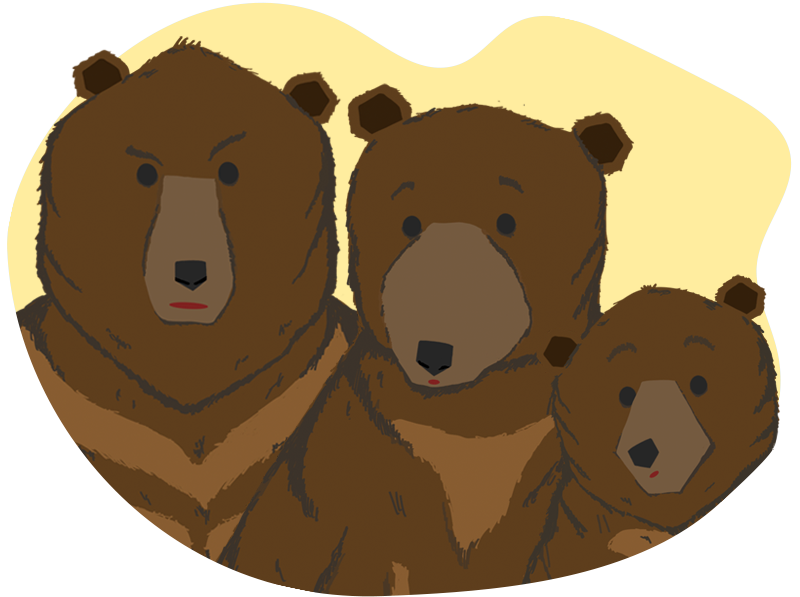
Min: I read a book recently ‘Framers’ and it talked about how we all unconsciously have mental models, and that really came up strongly for me during the exercises. I realised that a lot of creativity is about deciding the right frame to be applied when seeing the problem, the solution and the world. Even in the way we improvised, we drew from frames we may not have been conscious of, be it our understanding of fairy tales, our Singaporeanness, or our backgrounds.
I really don’t think of myself as a very creative person, so personally I have been working on being aware of my frames and to be more divergent in my thinking. And I observed that during the exercise, I was unconsciously questioning – Are we going around the same track? Can we add something new that creates a lot more possibility? – while still working within the boundaries of a fairy tale arc. To me, working and delivering creativity within those boundaries ultimately makes it meaningful.
Be creative with the questions you start with.
Studio Dojo: How do you see creativity play out in your life?
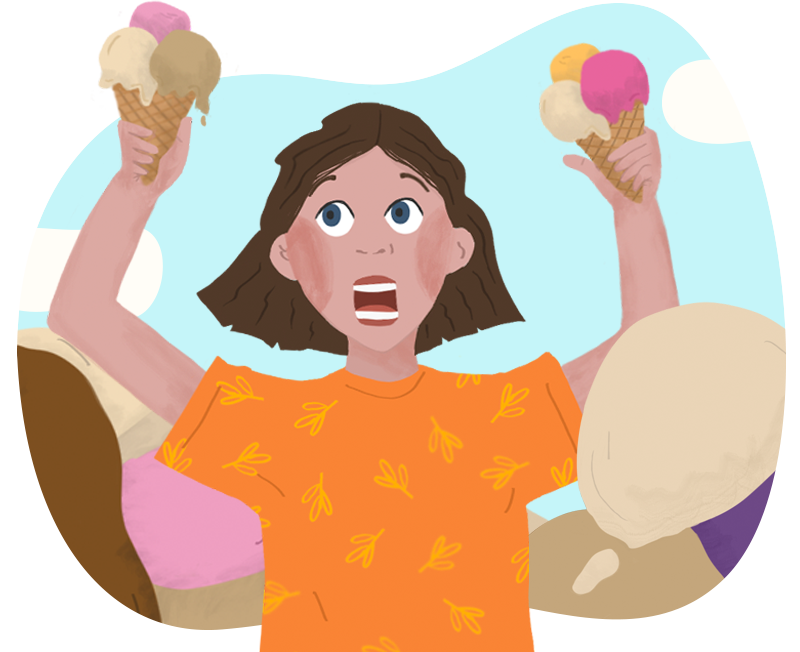
Nurul: I think I’m creative in trying to figure out solutions because I think a lot of the questions my team is asking are questions that haven’t really been imagined. The work is to start off with reimagining the questions being asked and then reimagining what answers to those questions could be. And that comes from reading a lot of books, talking to people, sitting down and having that space. To be intentional and intersectional about it. There’s a lot to learn from the experience of others who may not necessarily be in the same space of you, be it those in dance or palliative care or from other cultures. There are still aspects of the human experience in those stories and they can serve as roots to a lot of solutions. That is a form of creativity that I’m trying to practice.
Pei Kang: If I relate creativity back to my work, we start backwards in the questions that we ask in my team. Working in the sustainability space, my team often asks questions like Where do the waste go? rather than jumping in and working on the materials directly. Some people find our line of questioning odd but that’s our business model!
The questions that I reimagine come from two mental models I operate on. One, I think in a macro manner and I try to build this scaffold for my team. Two, I imagine the future, I question What is the world going to be like 50 years from now? and then work backwards from there. And then we start filling up the points in between both, I think that makes our thinking more fluid.
Min: On reflection, every business and every community is trying to answer something. But we’re also the ones posing the question, which we try to answer ourselves, so there’s really creativity in doing both. You don’t want to just be replicating the questions, so you look for questions that haven’t been asked. In innovation consulting work that I do, we understand the first principles and systems in one industry and then draw from frames and models of other industries to help us reimagine the questions and solutions, and I’ve always found that work to be so interesting.
Fariz: Sometimes creativity is not just about creating, it’s also about reimagining. I think the definition of creativity needs to transcend beyond aesthetics or artistry. It’s more than that, it’s about coming up with new ideas, working together, creating that safe environment for that to happen. I think conversations about creativity definitely need to happen and adjacent domains like Design Thinking, Futures Thinking or Systems Thinking are good segues to broaden your mindset, and hence allow you to be more creative.
When I feel safe, I am willing to test different ways of thinking.
Studio Dojo: What do you need in order to be creative?
Fariz: To be creative, you need an environment where people feel psychological safe to do so. It’s not just the person, the environment shapes the experience as well. I think designers are inherently creative, it’s just how confident we are in expressing that. I do think creativity lies on a spectrum, and the environment affects how much is brought out. If I’m in an environment where there’s a lot of judgement and criticism, I may start to think, What’s the point if I’m just going to get shut down by others? I may well just come up with practical ideas and move on.
Through my own facilitation work, I realised that alignment and icebreakers during co-creation sessions are so important, to create safety in the room for everyone. With safety, you get courageous and begin to question How much can I poke the bear? How much can I push the envelope?
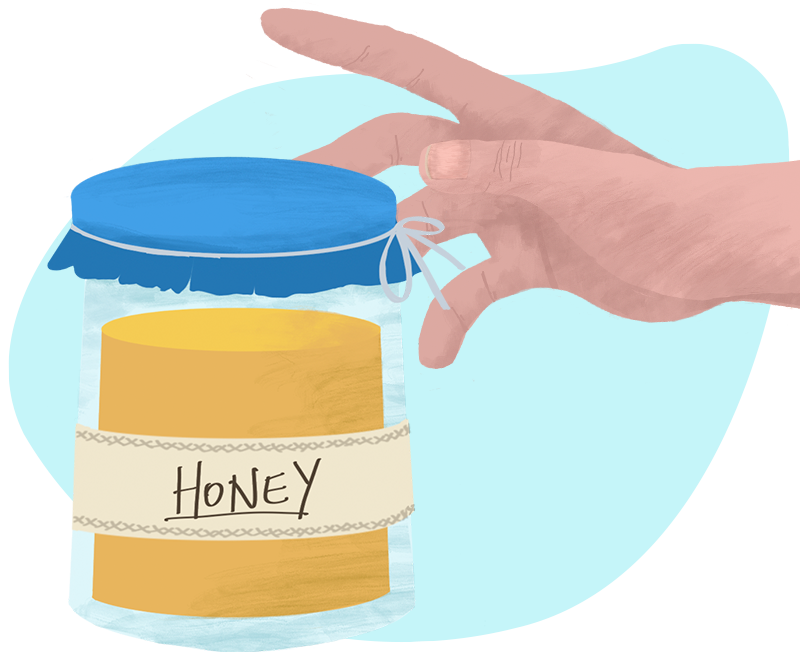
Nurul: When in safe spaces, I think it’s also important to see how intersectionality can occur even when everyone is not in agreement. That space allows an opportunity for ideas to be created through the intersection of people with different experiences, and I think that’s important. While there are some benefits to creating a structure for answers, there must also be the opportunity to ask about what’s not there and what has not yet been spoken about. This allows creativity to freely unfold.
I think being counter-intuitive or thinking outside the norms is very useful especially when looking at problems that are very new or have not really been in existence before. To continue approaching them with traditional mental models can actually be counter-productive.
Play is part of being creative.
Studio Dojo: What is one big takeaway from today’s session?

Min: For me, playing the games today was fun because we didn’t have to think that much, we immersed and said what’s at the top of our minds. We weren’t bound by realism and rules. And in being fully present and practicing the ‘Yes, And’ principle, we were already being good participants to the group. It reminds me of how creative I learn to be when I play with my 2-year-old toddler, to be fully present and engaging her with recycled materials as toys, constantly trying out new ways of playing is important.
Nurul: Playing games is important. It was nice that we had games, definitely not what I had initially expected. But it was interesting how in playing the games, it highlighted how each of us thought of creativity and how it influenced the way we participated. It was fascinating to see how all of us struggled with different parts of the different games. How do I get spontaneous in the beginning? How do I say something interesting? It’s a nice reminder how in the lightness of fun and play, we see significant things like how our different minds work.
Studio Dojo: We have been on this Creative Chronicles journey together for a whole year. Reflecting on your entire Creative Chronicles journey, what have you learned about yourself?
Fariz: This journey has been a great introspection on my perspective and identity as a designer. Each series has been a journal entry of sorts, from Series 1 when I was settling into my role as a lead designer, to Series 4 where I’m taking the next step in my career. Over the course of this year, I see the change in how I see design and the impact and meaning that my design can bring to others. At the same time, this past year has taught me a lot about self-love and mental health and how valuable they are to me.
Series 2 was my favourite, writing that heartfelt love letter to myself was quite a cathartic and emotional experience. Through that practice, I have been more intentional in crafting my words. It’s always interesting to read back the articles, have your words reflected to you and see that version of yourself. This journey has truly been a formative one.
Nurul: When we started, I really didn’t see myself as a creative. But now, I understand a little bit more, not about being a creative but being creative. Creativity is a process. Especially with COVID, a lot that happened also sparked this conversation about creativity for myself, and it’s been nice to thread that over the 4 series of Creative Chronicles.
I liked that the journey spanned over a year, it’s nice having the series to look back on as markers of what would have otherwise been a blank of time. This journey has been surprisingly thoughtful and encouraging in a lot of ways.
Min: Creative Chronicles has been a really nice way for me to connect back to Singapore during this pandemic in a good and thoughtful manner. On reflection, I realised just how much has happened in the past year and that really put things into perspective. Without the four sessions, I probably wouldn’t have been so thoughtful of such key markers. I really enjoyed doing the Causal Layered Analysis in Series 3, that session in particular got me questioning on how intentional I have been in doing things to achieve my larger purpose.
I never thought of myself as a creative. So, I really appreciated meeting the other Creatives on this journey because this experience shed a different light on creativity: it’s not just the artistic sense but rather the everyday creativity. And everyone of us has that within us.
Pei Kang: I have definitely grown as a leader in the past year. When I started this journey, I was conflicted on whether I was leading my team properly. I have always preferred being part of a team rather than leading it. Along the way, I realised this as a leader, I’m one step in front of them and I want to invite the team on the same journey I had. It’s truly about commitment and practice. And that led to the metaphor of a school in Series 3 – that’s my favourite series! – and guiding others through their own self-discovery journeys as well.
My team has grown over the past year and I’ve gotten better at the different elements of my role. I see it as providing the scaffold and having my team populate it, and allowing that to be part of their practice. Where I am right now, I no longer feel a conflict in my leadership role.
This article is the final part of our Creative Chronicles journey.
Read our earlier articles: Creative Chronicles Series.
We are so grateful to our four beloved Creatives, and to you our readers, for the past year of exploration. We hope our sharing has inspired you in one way or another to explore your own journey with creativity.
Till then, stay creative!

